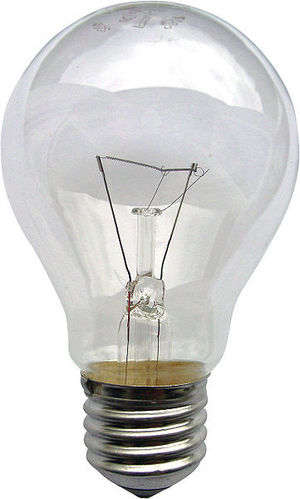Since 1985, Dream Theater has been one of the leaders in underground, progressive rock. Dream Theater shows sell out, and the band carries a hugely dedicated fan base without the help of radio, MTV or fabulous marketing. Some compare them to other progressive bands, such as Rush, while others connect them to an older style of progressive rock, such as, The Who.
Dream Theater is known for unbelievable technical talent, a unique and distinct sound that can be heard across all nine of their studio albums, and their sometimes hidden mastery of the art of music. Each chord of each song, particularly those which start and end the songs is carefully chosen and has meaning. While Dream Theater has only one concept album (Metropolis Part II: Scenes From a Memory), each album means something in the Dream Theater collection and often follows a pattern of number of tracks, hidden title meaning, and carries an underlying theme.
Dream Theater, being my favorite band, was incredibly difficult to narrow down to 10, but I feel this is the best of the best, according to yours truly.
10)”Prophets of War” (Systematic Chaos 2007)- This tune where Dream Theater flexes its political muscle will have you mesmerized regardless of your own political affiliations. This anti-war anthem for the modern generation will get stuck in your head and have you turning your iPod on repeat. I feel that the strength of this song is in Mike Portnoy’s hypnotic percussion beat and unique layering of vocals. For those who enjoy this type of song with this type of messages, check out “Sacrificed Sons” on Octavarium. This is Dream Theater’s response to 9/11 and is also a top quality song.
9)” Innocence Faded” (Awake 1994)- I dare you to listen to this song and not get a cheesy smile on your face when you hear the opening guitar rifts. This sounds like something that should have popped right out of the Bill and Ted’s Excellent Adventure soundtrack, but is a fan, and personal, favorite. Dream Theater demonstrates themselves as the lyrical powerhouses of musical poetry that they are in this song. I would suggest that this Dream Theater song would suite the masses, unlike some Dream Theater symphonies of sorts that max out after twenty-three minutes. It’s relatively short, sweet, and for lack of a better term in the progressive world, cute!
8)”The Root of All Evil” (Octavarium 2006)-This song helps to demonstrate Dream Theater’s musical genius. In this case, I’m not referring to talent, but rather genuine musical smarts. The album Octavarium uses its eight tracks to form a musical octave by starting each of its songs with a different minor key. It moves in a circle, with “The Root of All Evil” beginning in the key of F minor, continuing to G, then A, then, B, and so on all the way back to F on the final track. Being the first song and the “root” of the musical octave, the title of the song is very appropriate. The song also begins with the ending chord from the last track of the previous album, Train of Thought. The song itself is a rhythmically driving run through the Seven Deadly Sins that is sure to have you lusting for more.
7) “Misunderstood” (Six Degrees of Inner Turbulence 2002)- I would find it difficult to find someone who couldn’t relate to this beautifully played and meticulously written ballad/rock combo. As the emotions in the song grow more intense, the music responds by growing more and more complex. Eventually, perhaps being crushed under the weight of the song’s content on loneliness and unexplainable alienation, the song explodes into a fireworks show of musical awesome in slow motion. This song touches the emo in us all and gives a feeling that we aren’t alone in our feelings of smallness in this huge, crazy world.
6) “Lines in the Sand” (Falling Into Infinity 1997). If I were to describe this song in one word, it would have to be hypnotic; Hypnotic, captivating, and mesmerizing. This song gently pulls you in and sits you down on the hood of a Volkswagen GTI. You like sitting on the smooth, warm hood and get rather comfy there. Then suddenly…that speed machine does what God and Man created it to do and starts chasing you down the street at 75 miles per hour. Despite the danger you’re in, you have a smile on your face because the adrenaline rush is making you feel alive. THAT is “Lines in the Sand.” Its hypnotic beginning pulls listeners in and hooks them into seeing what is going to happen with this increasingly building movement. It then explodes into a NASCAR race of pure rock.
5) “The Spirit Carries On” Score: 20th Anniversary World Tour 2006)- If the intro to this song doesn’t melt your heart, I question if you have one. The technically amazing Petrucci demonstrates his unmatched ability to capture your attention through pure beauty and emotion. The chord progressions, fueled by keyboard wizard, Jordan Rudess give this song a sadness and hopefulness that can only come together in a song like this. When performed live, it can only be compared to the feelings of a close knit family gathering for some great event, whether happy or tragic. You can feel a sudden closeness among thousands of strangers. In short, this song soars. Originally from Metropolis Part II: Scenes From a Memory, I chose this version of this song primarily because of the added opening that doesn’t exist in full on the studio album. For anyone who is looking for answers to what happens after you die, Dream Theater may make you a believer with this touching tune.
4) “Take the Time” (Once in a Livetime 1998)- Originally from Dream Theater’s 1992 release, Images and Words, this track got a much needed overhaul. As a college senior, this song has been my anthem of hope. This song, both in lyrical content and musical flow, encourages perseverance and persistent. The song can be summarized in the first lines of the chorus, “You can feel the waves coming/Let them destroy you or carry you on/You’re fighting the weight of the world, but no one can save you this time/Close your eyes/You can find all you need in your mind.” This live version is more driven and fast paced than its predecessor and is unique in that it does not start with the vocals of James LaBrie. The familiar sounds of LaBrie victoriously emerge towards the end of the first line giving this song a very unique opening. This song version truly captures the rawness and togetherness of a live concert experience.
3) “Hollow Years” (Live From Budokan 2004) Much like “The Spirit Carries On,” this live version takes a leap over the original (Featured on Falling Into Infinity) because of the addition of another gorgeous introduction collaboration by Petrucci and Rudess. The song features a Carlos Santana type guitar song, distinguishing it as unique, even from other Dream Theater ballads. The lyrics mixed with sometimes mysterious sounding music give this song a slight haunting feeling, making it stunningly beautiful and great to belt at the top of your lungs in the car when no one else is looking.
2) “A Change of Seasons” (A Change of Seasons 1995). Written by drummer, Mike Portnoy at the age of 18, this epic twenty-three minute and ten second song highlights the true genius of Dream Theater, both in musical composition and pure technique and talent. This masterpiece is divided into seven sections which flow seamlessly into one another. Much like “Lines in the Sand,” it gently sucks you in and then spits you out. Unlike “Lines in the Sand,” however, the tempo, beat, time, and key are constantly changing. This song has a little bit of something for everyone. Hard rock, technical showmanship, melodic beauty, and poetic lyrics that make you think. This song is not for the weak of heart, or short of attention span.
1) “Octavarium” (Octavarium/Score: 20th Anniversary World Tour 2006). Mike Portnoy, at the time of its release claimed this to be the best Dream Theater work to date. After one listen to this twenty-three minute and fifty-eight second studio recording has everything that Dream Theater does best. The introduction, both haunting and beautiful is not played by John Petrucci’s guitar as it initially sounds to be. Rather, it is played on the Continuum Fingerboard, designed by Dream Theater keyboard wizard himself, Jordan Rudess. This instrument is a flat board that is laid out like a piano keyboard, but it is played much like a string instrument by running a finger across the various parts to achieve different pitches. Much like “A Change of Seasons,” this song has something for everyone to love. Keeping with the album concept of Octavarium, the title track ends where it begins, in the key of F minor. The song builds to a musical octave in which the previous seven songs on the album are refered to, only to be topped off with the warlike cry of LaBrie declaring that we are “trapped inside this Octavarium.” I claimed both albums on which this song appears because they are both brilliant representations of the song. I find the version from Score: 20th Anniversary World Tour to be particularly engaging because of the creative liberties that Rudess takes in the song’s stunning opening section. Has Dream Theater reached musical perfection in this song? I could argue “Yes,” but if there’s one thing a Dream Theater fan knows, it’s that you don’t know what this quintet of geniuses will pull of next.
Choosing one Dream Theater song over another is nearly as difficult as deciding which of your children you love more. Perhaps that is slightly dramatic, but it is challenging to pick ten winners out of musical gold over a twenty year career. While Dream Theater is not for the weak, and is often known as “The Band for Musicians,” I encourage you to check them out. You will not often find them on radio airplay or television, but this does not diminish their talent. In fact, Dream Theater has built an empire based on talent alone, with no help from the world of mainstream music and media. So load up your iTunes, or whatever you’re legal music purchasing software of choice is, and introduce yourself to Dream Theater. You’re sure to like what you hear.


